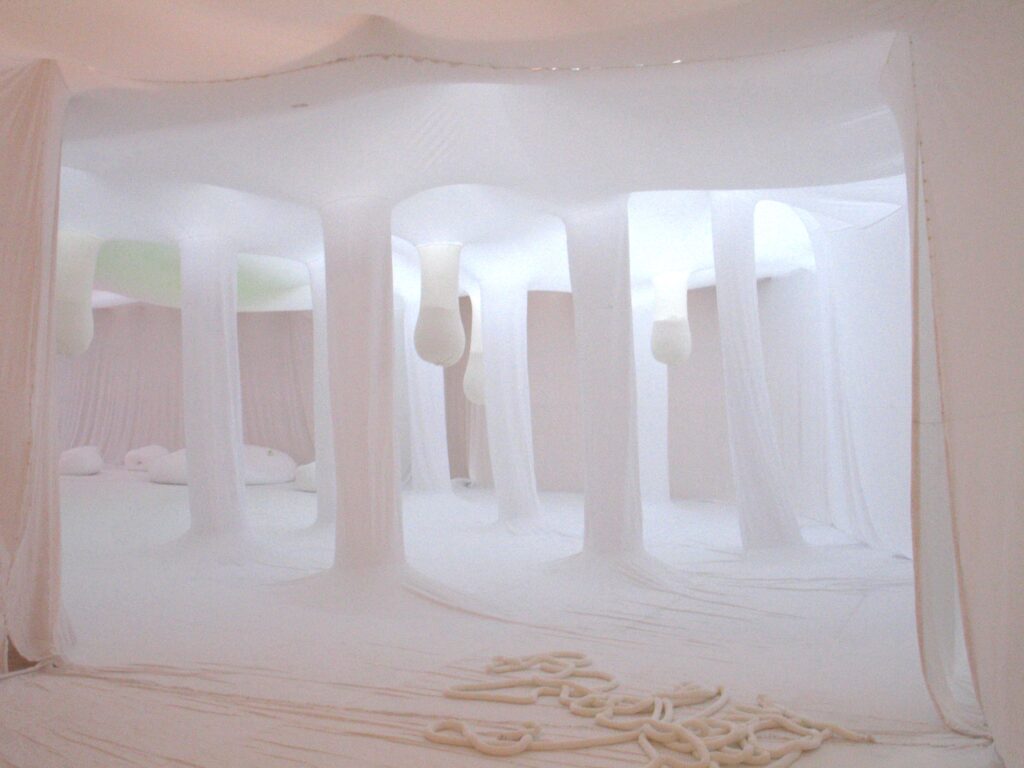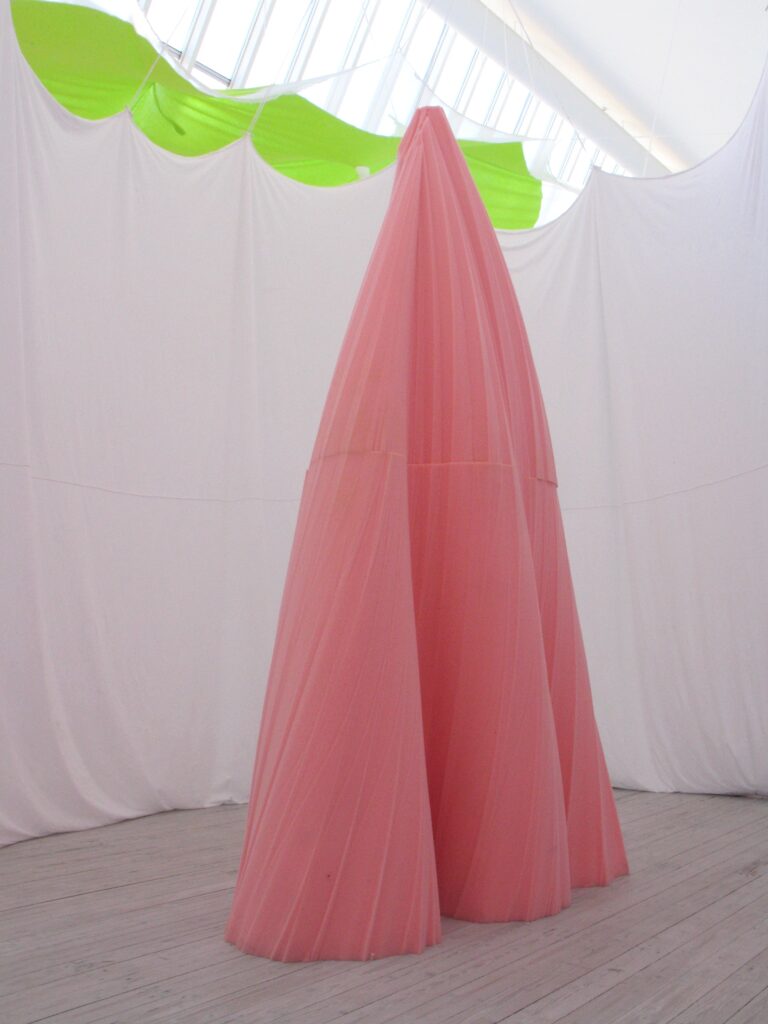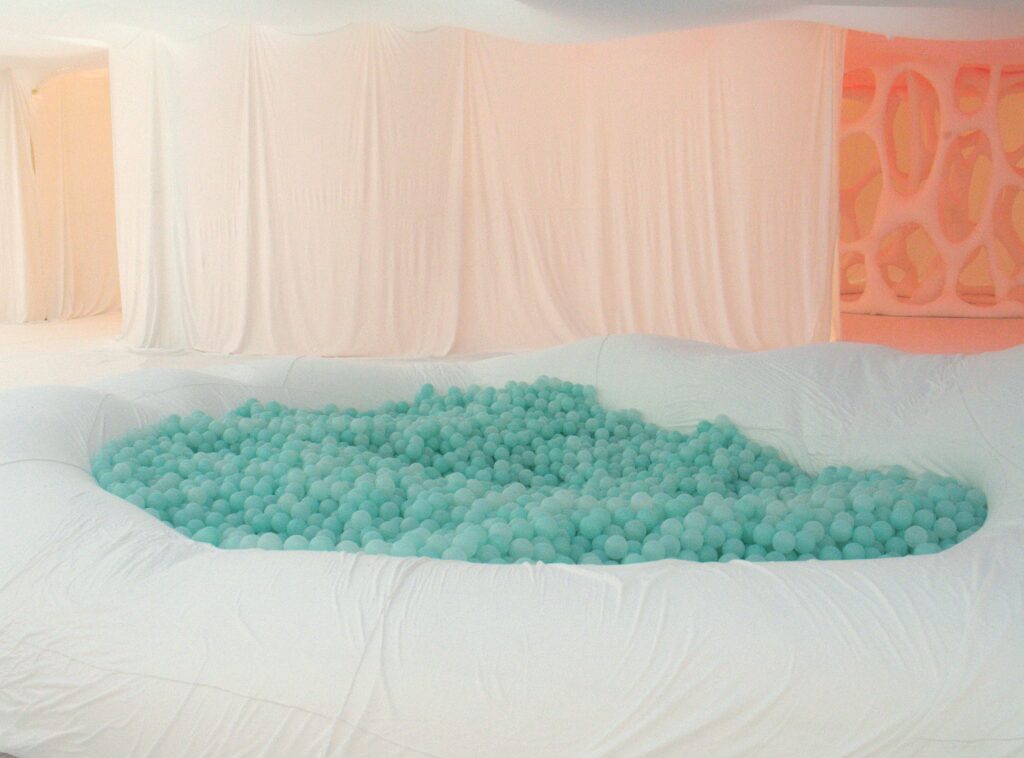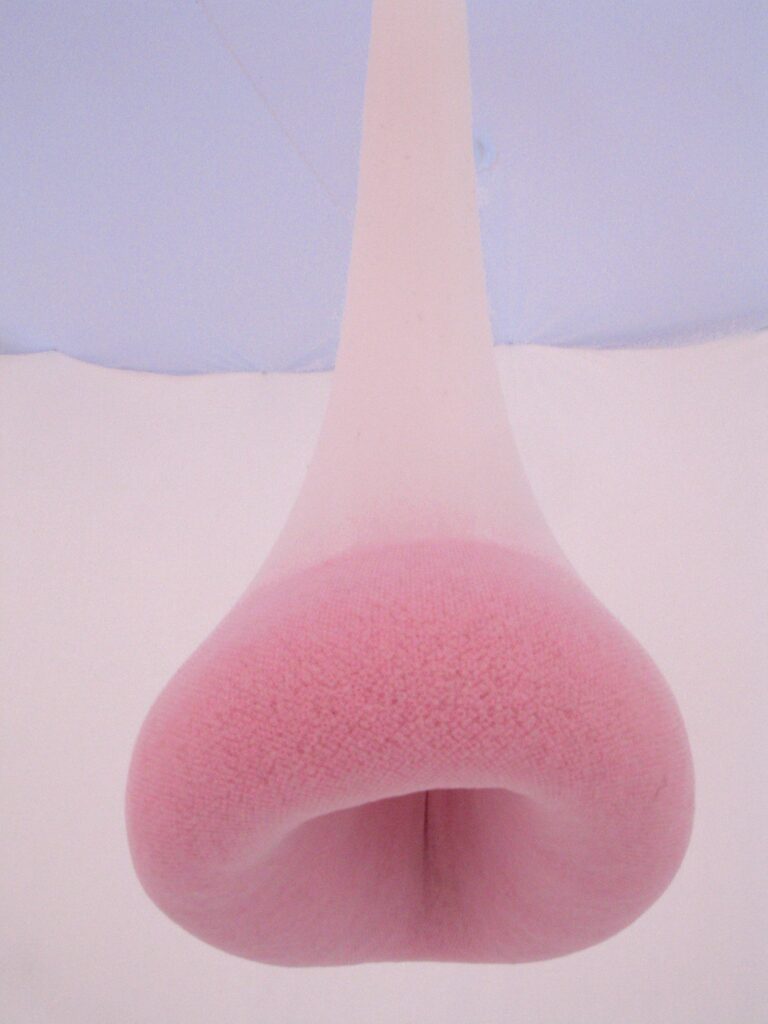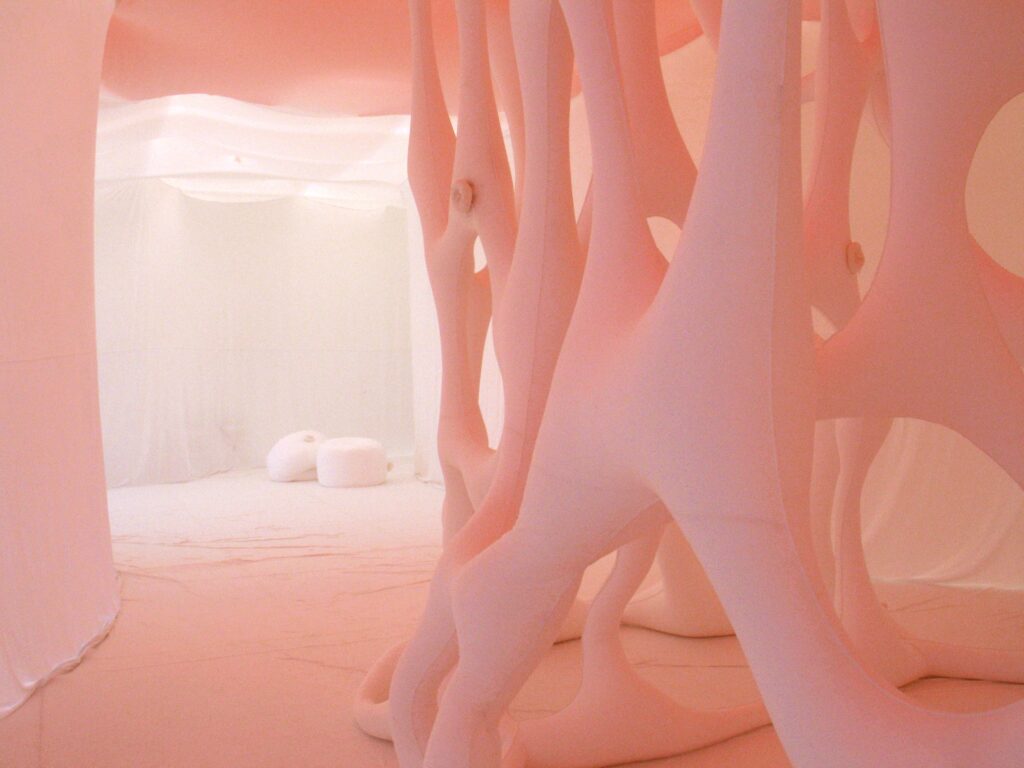
Ernesto Neto
18.2 2006 – 1.5 2006
In 2006, Malmö Konsthall presented an exhibition by the Brazilian artist Ernesto Neto. The exhibition provided a comprehensive overview and summary of Neto’s artistic practice, showcasing a range of significant works in a new light. For Malmö Konsthall, Neto created a completely new piece— The Malmö Experience. In this massive site-specific installation, designed as an organic labyrinth of colors, fabrics, and shapes, visitors could experience the work both from within and from the outside. The installation occupied the entire art hall, inviting visitors to enter, touch, and engage with it through scent, sight, and sound. The exhibition was based on the colors of the rainbow, and the organic labyrinth consisted of a series of smaller spaces that together formed a cohesive whole.
Neto’s artistic practice revolves around abstract installations, often occupying the entire space. His materials are thin, delicate, light, stretchable fabrics made of nylon or cotton. Like fine membranes, attached to the ceiling by long, extended threads, the works hang down into the space, forming almost organic shapes. Sometimes, they are filled with fragrant spices, hanging in droplet forms like giant mushrooms or oversized stockings. At other times, he creates unique soft sculptures where visitors are allowed to feel through small openings in the surface. He also creates spatial labyrinths, where visitors can enter and, in doing so, engage with the works and interact with them.
Neto’s art is a sensory experience. It evokes associations with the body and the organic. He himself describes his works as an exploration and a representation of the body’s landscape, from the inside. For Neto, it is important that the viewer actively interacts with and physically experiences the work by feeling, smelling, and touching it.
Ernesto Neto was born in 1964 in Rio de Janeiro, Brazil, where he also lives and works. He has had a long series of exhibitions around the world, including: Freud Museum, Vienna (2005), Domaine de Kerguéhennec, Centre d’art contemporain, France (2005), Centro Cultural São Paolo (2004), Hirshhorn Museum and Sculpture Garden, Washington DC, Kunsthalle Basel (2003), Århus Kunstbygning (2002), Brazil’s pavilion at the Venice Biennale (2002), XXIV Bienal International de São Paolo (1998), and the Sydney Biennale (1998).
Ernesto Neto is considered one of the foremost figures in Brazil’s contemporary art scene. He has drawn inspiration from Brazilian neo-concretism, whose most famous advocates, Lygia Clark and Hélio Oiticica, in the late 1950s and early 1960s distanced themselves from modernism’s ideas of autonomous geometric abstraction. Instead, they sought to equate art with living organisms, a kind of organic architecture, and to invite an active and participatory viewer.

